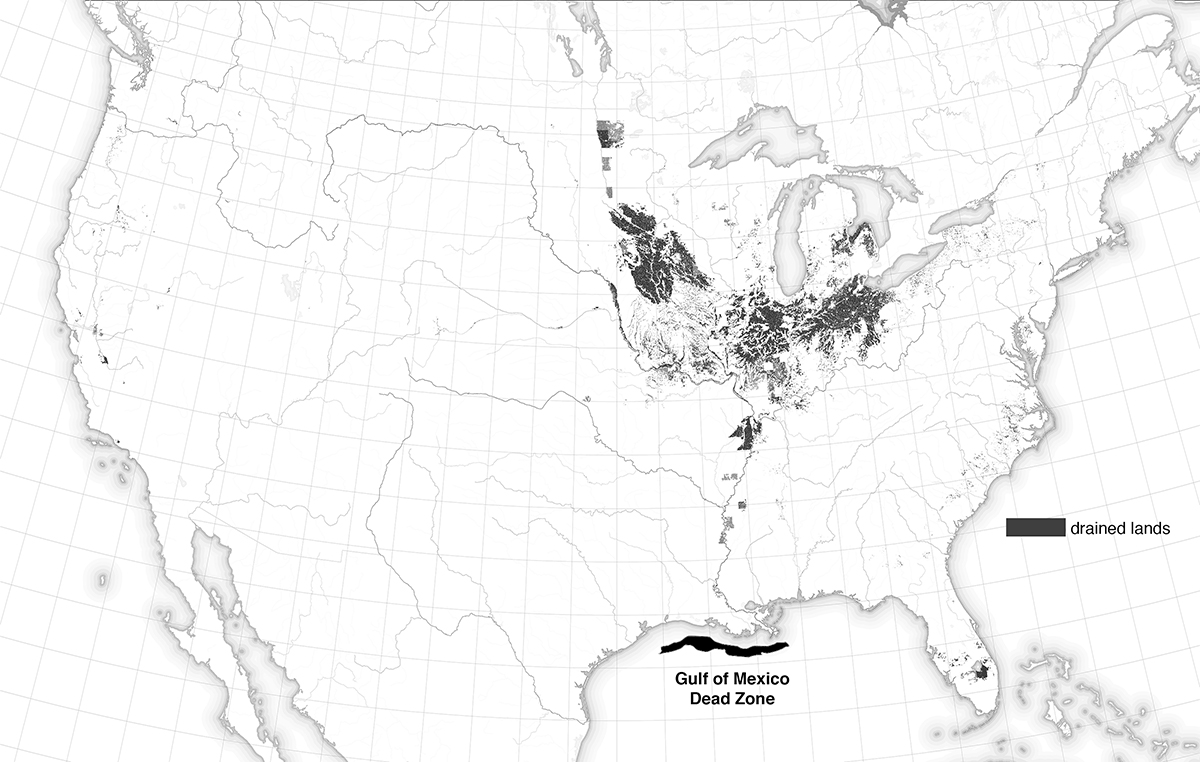![]()
From Drain to Delta
Green Infrastructure for Working Landscapes
Publication
Chapter in Fresh Water: Design Research for Inland Water Territories. Mary Pat McGuire and Jessica M. Henson (Eds) Applied Research & Design Publishing. pp 71-81.
Abstract
This chapter considers design strategies for managing hypoxia at the scale of the tile drain. Though the profession has largely overlooked production agriculture, landscape architecture has developed a robust set of tools and strategies for impacting large-scale hydrologic systems through small-scale interventions in the city. The discipline has been at the forefront in designing green infrastructure to mitigate stormwater runoff and coastal inundation, increasing the ecological productivity of our streets and shorelines. Meanwhile, new water regulations have supported discrete projects and design standards that mitigate water pollution. Could landscape architects apply urban infrastructure strategies like bioswales and rain gardens to agricultural contexts? If so, what legal or regulatory frameworks would facilitate the development and deployment of such strategies? Through a historical review of tile drain infrastructure, the political and regulatory contexts of its development and a survey of experimental green infrastructures, this chapter explores how landscape architects can develop design standards that not only improve water quality but also mitigate flooding, create habitat for fish and wildlife and create spaces for passive recreation.
Read the full chapter here.









